Ever wonder when to water your garden for the best results? Many gardeners struggle with this question. Studies show that proper watering can make or break your plants’ health. This article will reveal the best time to water a garden and share six pro tips for thriving plants.
Ready to level up your green thumb?
Key Takeaways
Water your garden early in the morning (5-10 a.m.) for best results. This timing helps plants stay hydrated all day and prevents fungal growth.
Deep watering once a week, giving 1–2 inches of water, is better than frequent shallow watering. This encourages deep root growth.
Use mulch to conserve moisture, reduce water use by up to 50%, and suppress weeds. Keep mulch a few inches away from plant stems.
Adjust watering based on seasons, soil type, and plant needs. New plants need more frequent watering than established ones.
Look for signs of over or under watering, like yellowing leaves or wilting. Overwatered plants feel soft and mushy when squeezed.
Table of Contents
Optimal Times to Water Gardens
Watering your garden at the right time makes a big difference. Early morning and late evening are the best times to give your plants water. These cooler hours help the water sink deep into the soil, giving your plants what they need to thrive.
Morning Watering Advantages
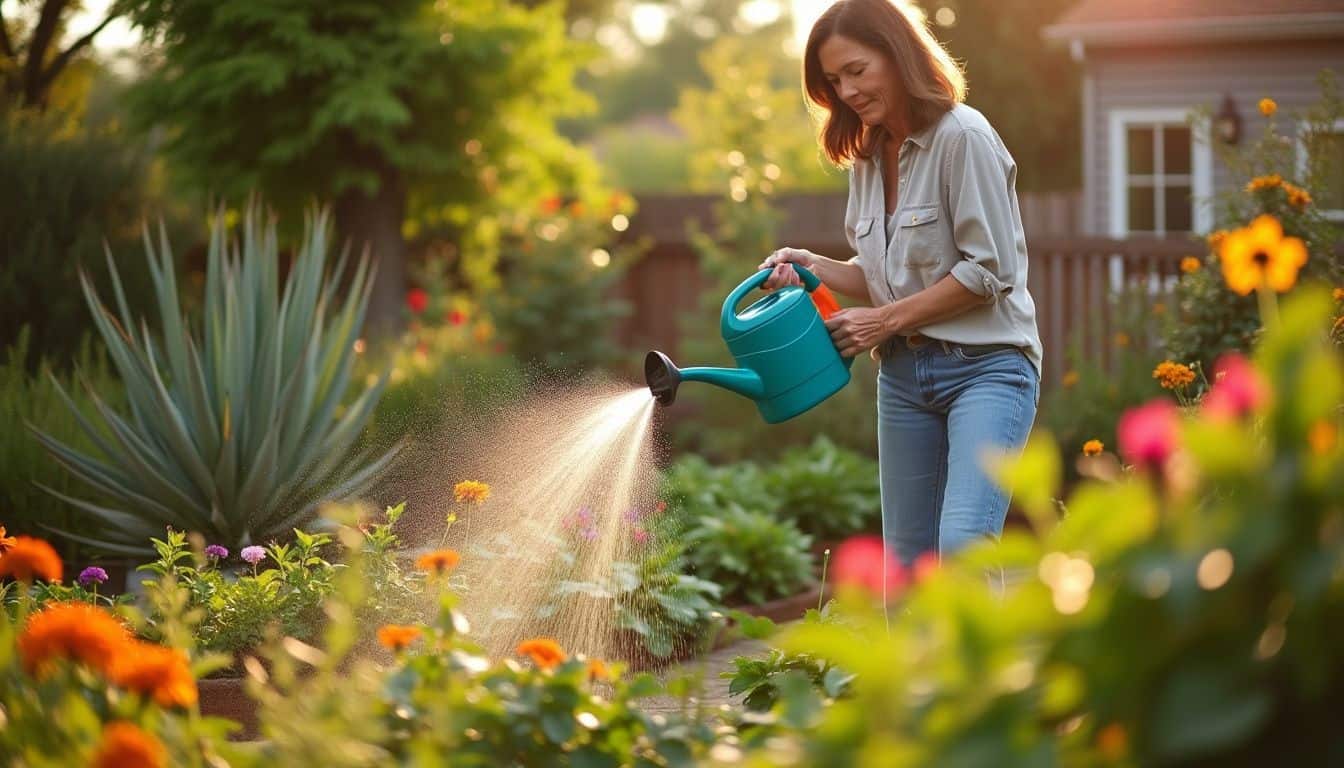
Early morning watering gives your garden a head start. From 5 to 10 a.m., plants soak up water best. The sun isn’t too hot yet, so less water evaporates. This timing helps plants stay hydrated all day.
It’s like giving them a good breakfast before a busy day.
Watering in the morning also keeps plants healthier. Wet leaves dry quickly in the daylight. This stops mold and bugs from setting up shop. Deep watering at this time reaches roots 5 to 6 inches down.
It’s a smart move for any commercial garden maintenance in Perth or home gardener. Your plants will thank you with lush growth and fewer problems.
The early bird catches the worm, but the early gardener catches the healthiest plants.
Evening Watering Considerations
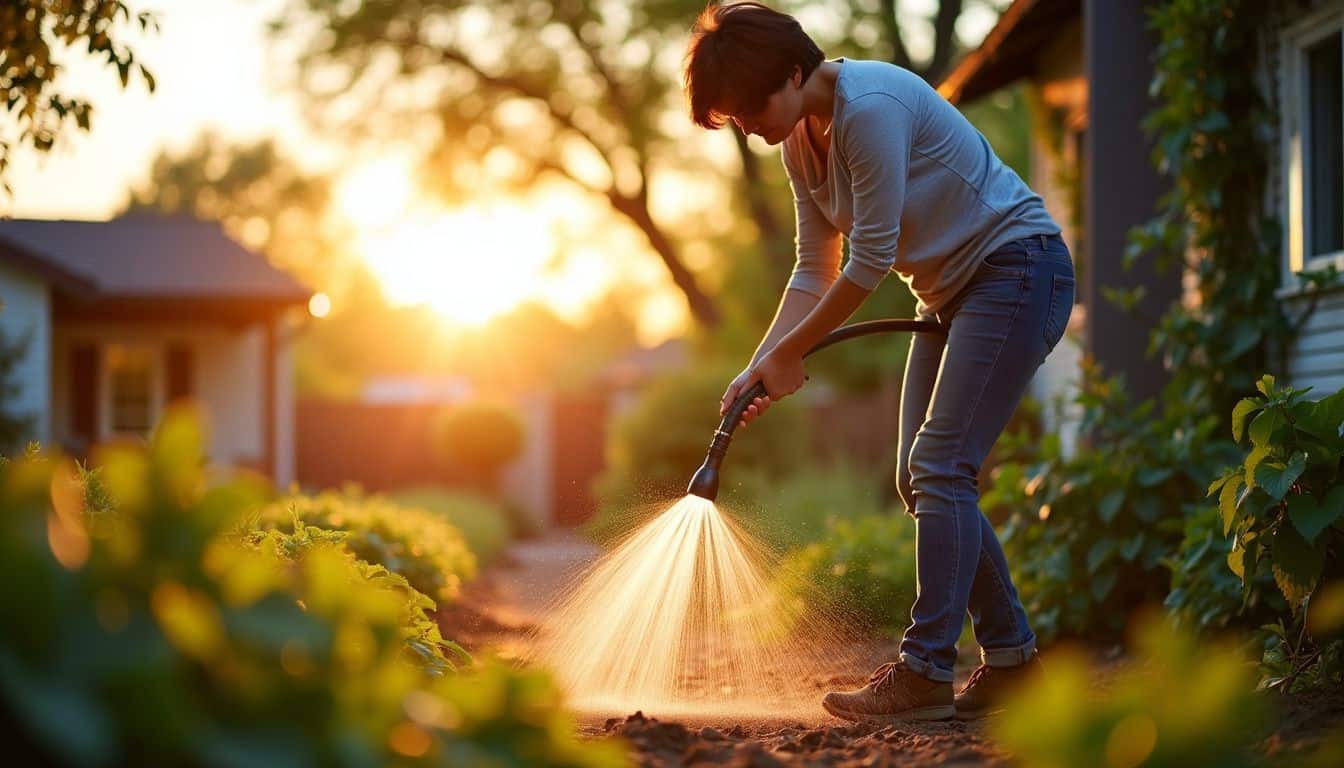
Evening watering can be tricky for your garden. It might seem like a good idea after a hot day, but it comes with risks. Leaves and stems stay wet longer at night, which fungi love.
This extra moisture can lead to plant diseases like powdery mildew or black spot. If you need to water in the evening, try to do it before sunset. This gives plants time to dry off before nightfall.
Late afternoon watering (after 4 PM) is fine if mornings don’t work for you. But try not to soak the leaves if possible. Focus on the soil instead. Use soaker hoses or drip irrigation to keep water off the foliage.
This helps prevent fungal growth and keeps your plants healthier. Healthy plants are happy plants!
Key Factors Affecting Garden Watering Schedules
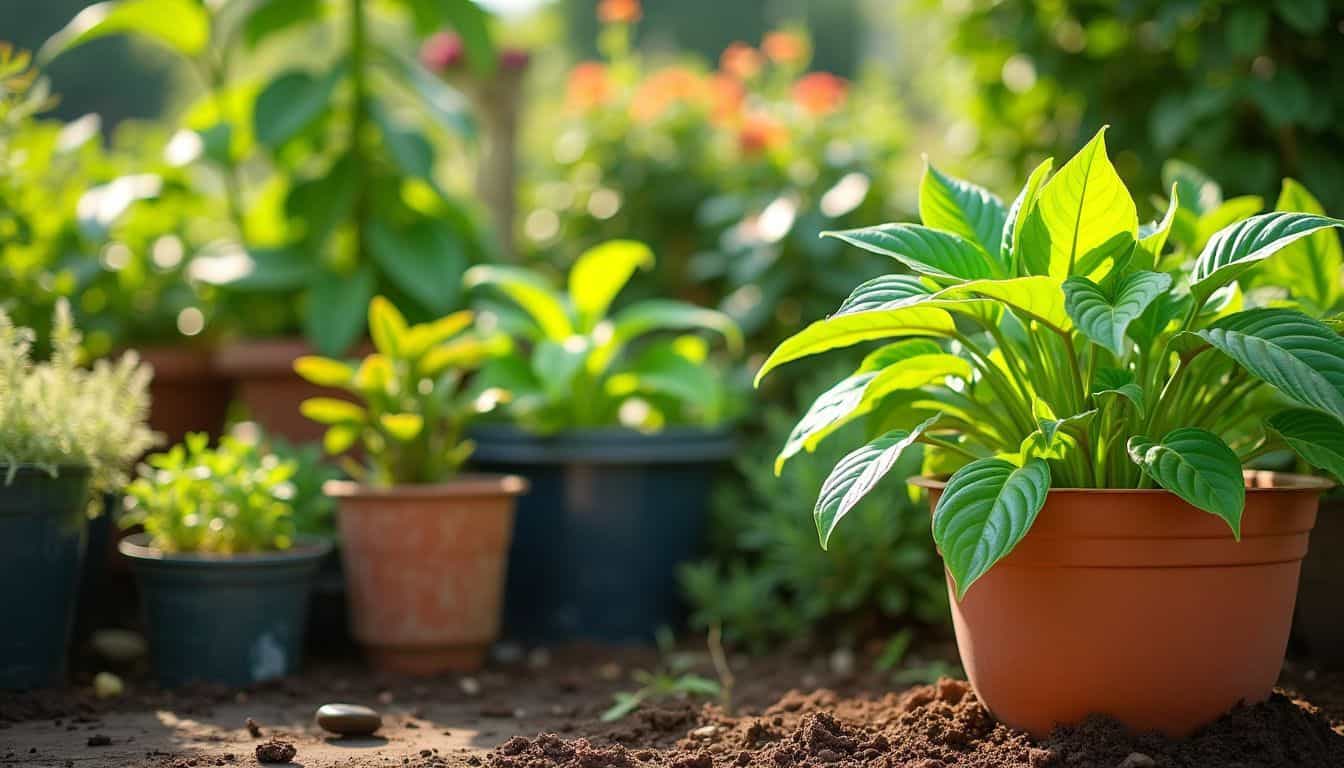
Watering your garden isn’t a one-size-fits-all deal. Weather, plant types, and dirt all play a big role in when and how much you should water. These factors can make or break your green thumb game.
Climate Effects on Watering
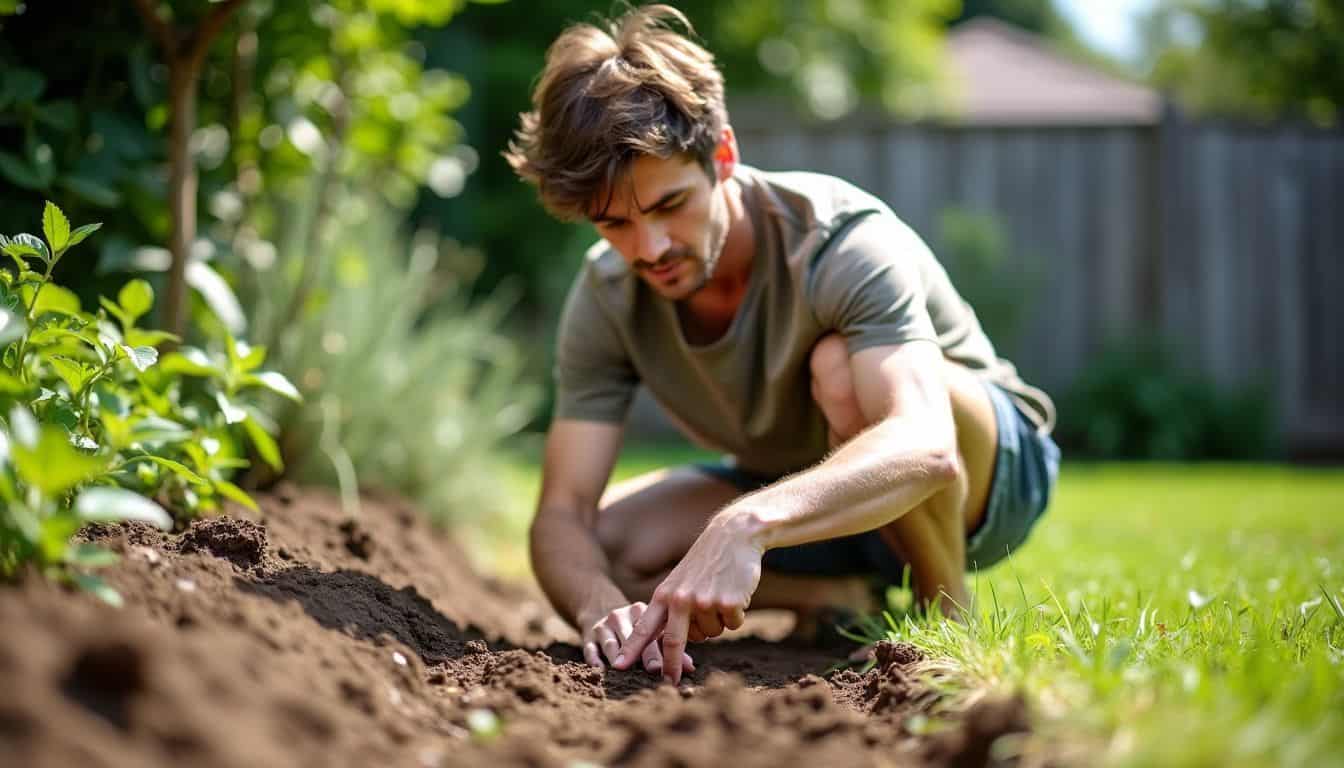
Climate plays a big role in how often you water your garden. Hot, dry weather makes plants thirsty and soil dry out fast. You’ll need to water more when it’s hot and windy. Cool, rainy days mean less watering.
Keep an eye on the forecast to plan your watering schedule.
Soil type matters too. Sandy soil drains quickly, so it needs water more often. Clay soil holds water longer but needs deeper watering. I learned this the hard way when I first started gardening.
My clay soil stayed wet for days, and I nearly drowned my tomatoes! Now I check the soil before watering. A simple finger test works great.
The best fertilizer is the gardener’s shadow. – Old Proverb
Needs of Different Plant Types
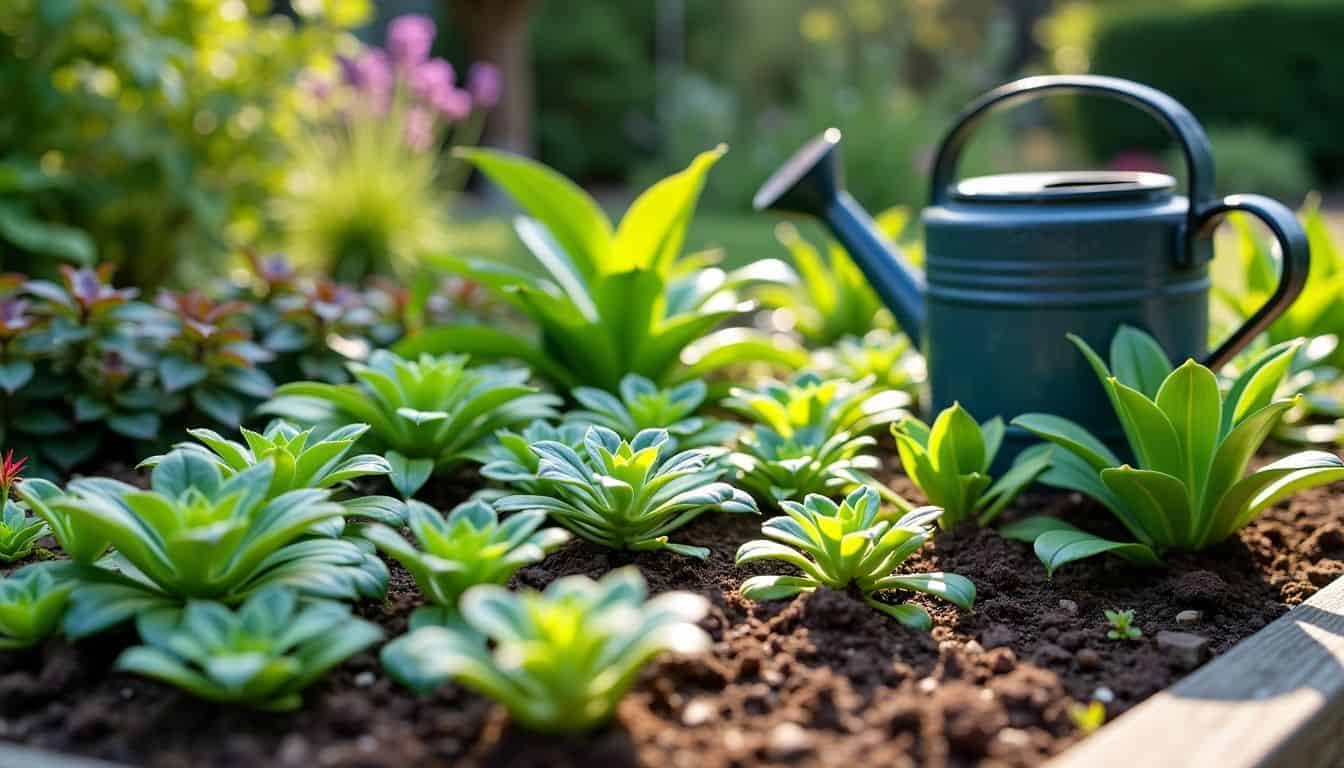
Plants are picky eaters. Some crave lots of water, while others prefer to stay dry. Veggies like tomatoes and peppers need steady moisture to grow juicy fruits. But succulents? They’re happy with just a sip now and then.
Knowing what each plant wants helps you avoid drowning or starving your green buddies. It’s like feeding a picky kid – you gotta learn their tastes!
Your garden is a mix of thirsty and not-so-thirsty plants. Leafy greens and root veggies need more water than herbs or drought-tough plants. New seedlings are extra needy, requiring frequent, light watering to keep their tiny roots moist.
But once they grow up, most plants prefer a good, deep drink once a week. That’s about 1 to 2 inches of water for veggie gardens. It’s all about finding the right balance for your plant family.
Soil Types and Water Absorption
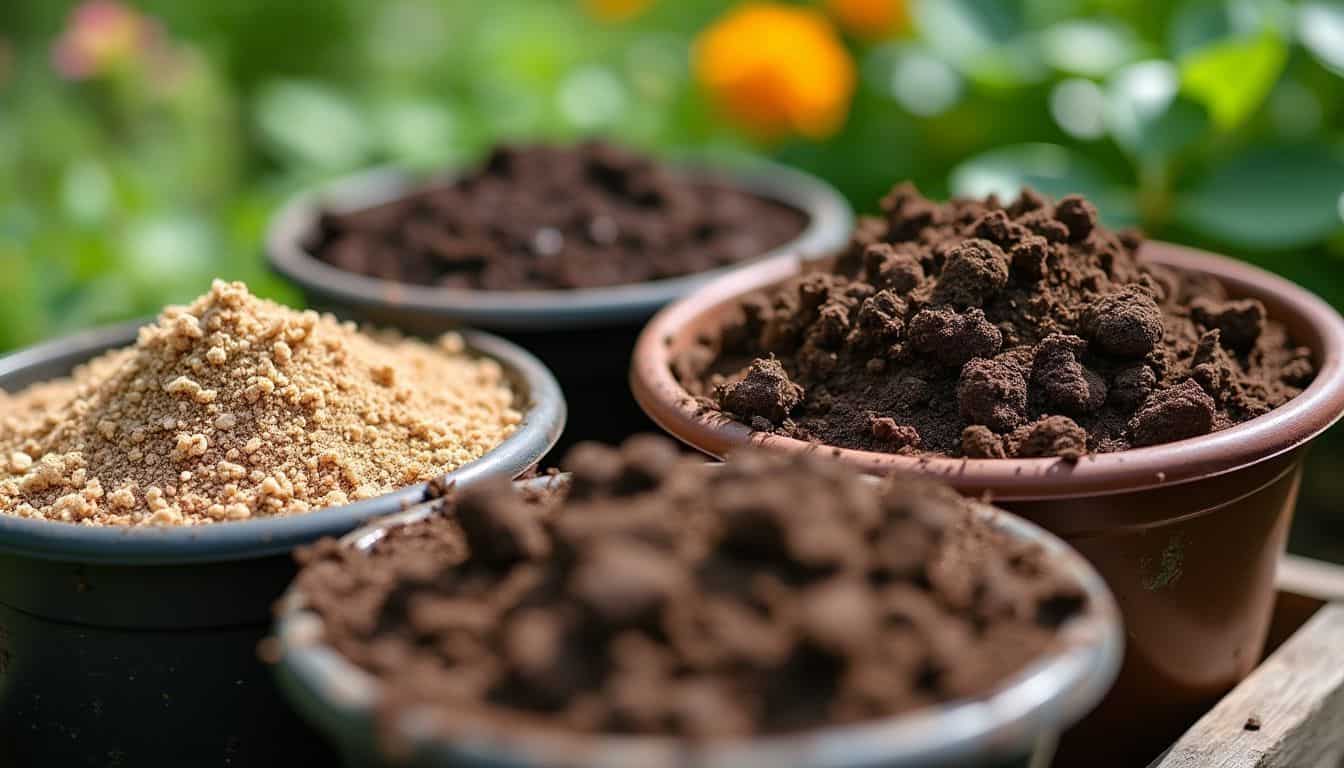
Soil types play a big role in how your garden drinks water. Sandy soil is like a sieve – water runs right through it. This means you’ll need to water more often to keep your plants happy.
Clay soil, on the other hand, holds on to water like a sponge. It’s great for keeping moisture around, but it can lead to soggy roots if you’re not careful.
Loamy soil is the goldilocks of the garden world. It’s got the best of both worlds – good drainage and water retention. Most plants love this soil type. It lets roots breathe while keeping them hydrated.
If you’re lucky enough to have loamy soil, your watering job just got easier. But don’t worry if you don’t – there are ways to improve any soil type for better water absorption.
Effective Watering Techniques for Garden Health
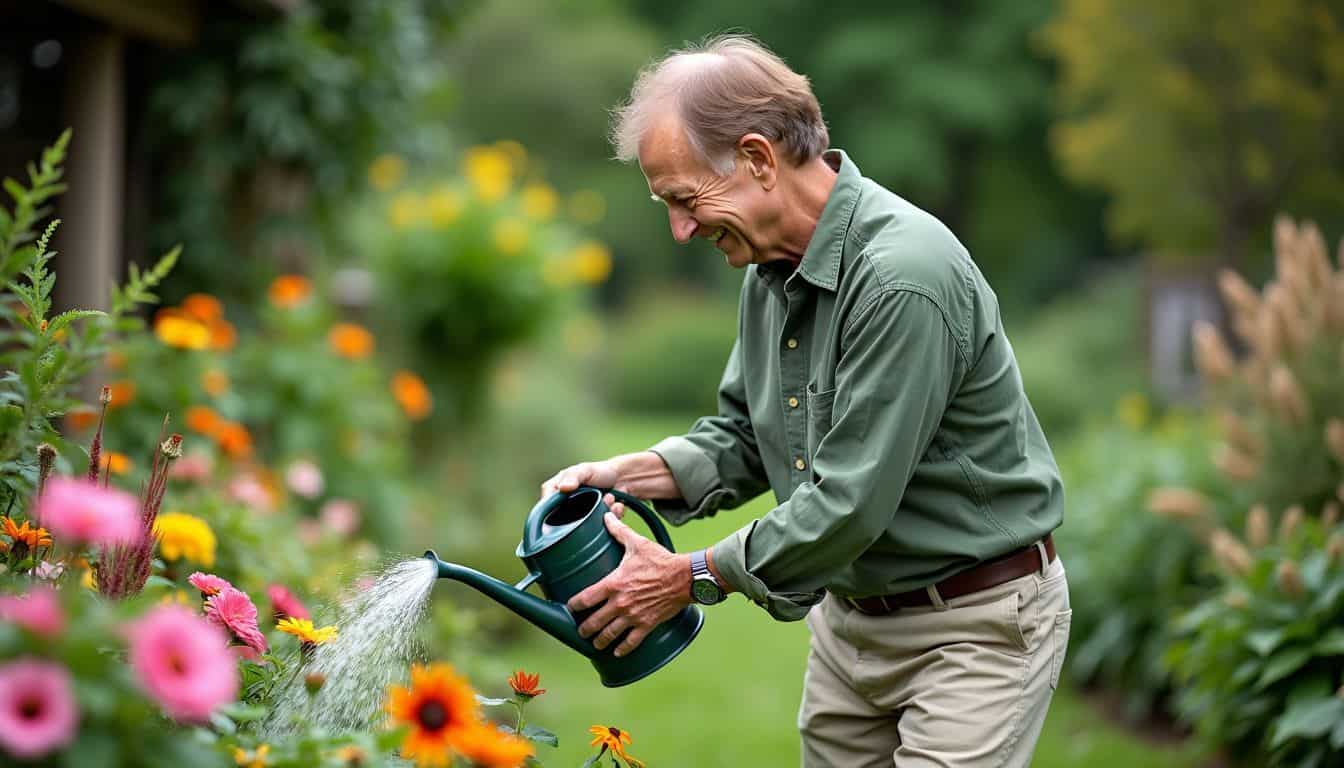
Watering your garden right can make or break your plants. Let’s dive into some pro tricks to keep your green buddies happy and thriving.
Benefits of Deep Watering
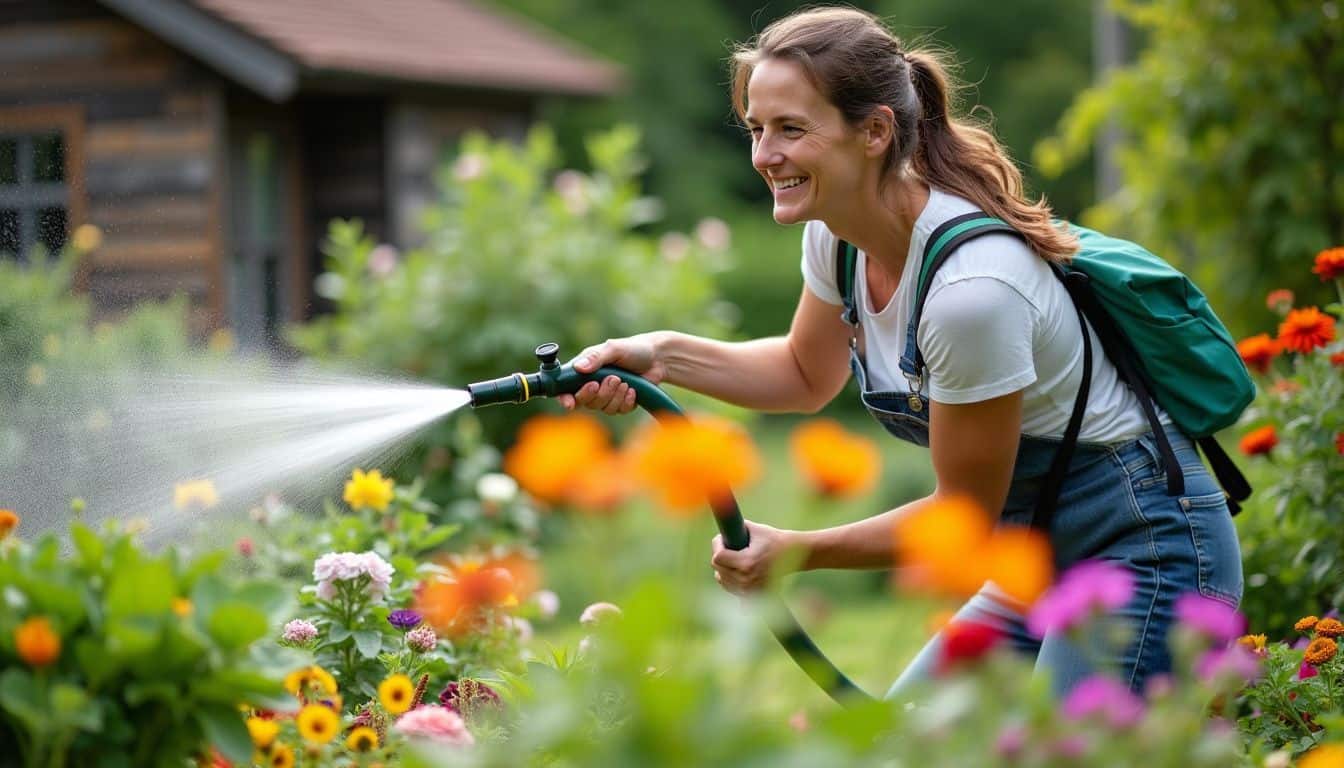
Deep watering is a game-changer for your garden. It soaks the soil about 8 inches down, helping roots grow deep and strong. Some roots can stretch nearly 2 feet long! This deep moisture keeps your plants happy and healthy.
It’s like giving them a big drink that lasts for days.
But wait, there’s more! Deep watering also fights off pesky weeds. How? The water stays deep in the soil, away from shallow-rooted weeds. Plus, it saves you time and money on your water bill.
You won’t need to water as often, and less water will evaporate. Now, let’s talk about how mulch can make your watering even more effective.
Using Mulch for Moisture Conservation
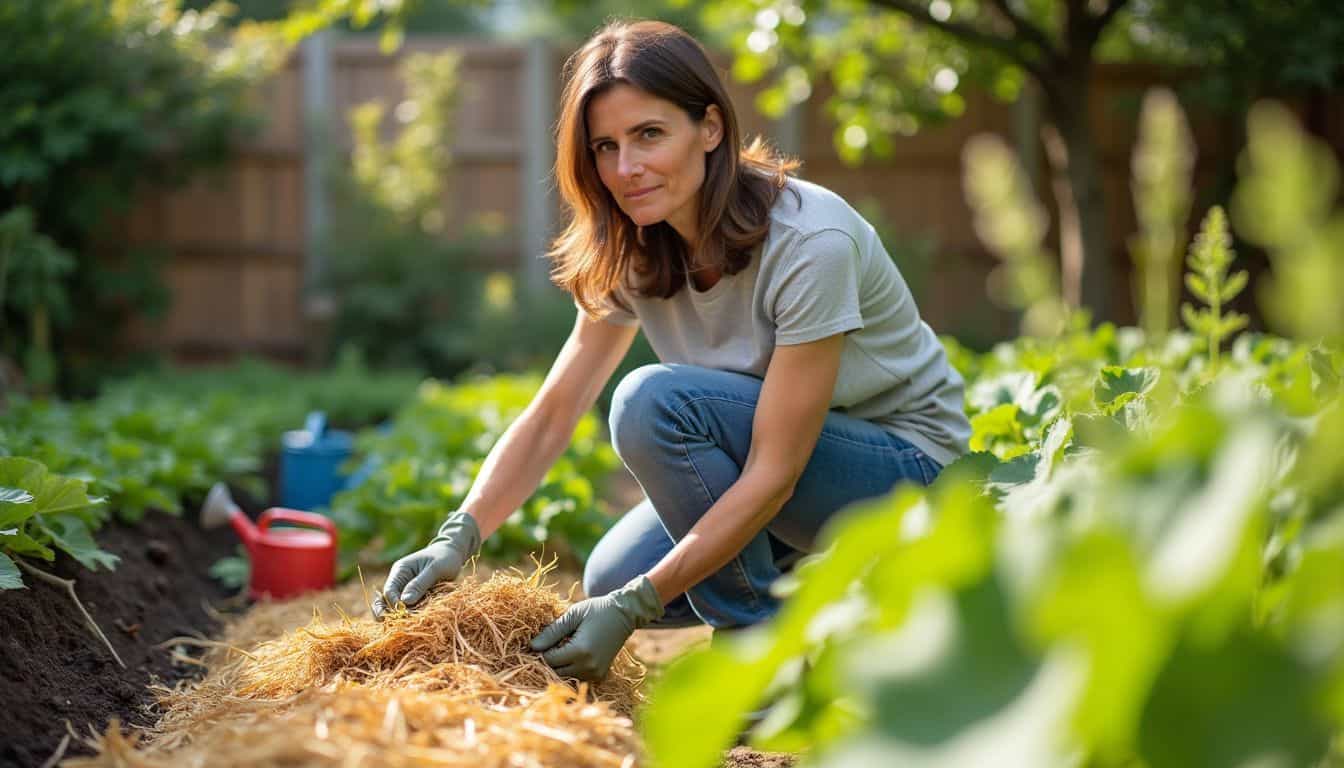
Mulch is a gardener’s best friend. It’s like a cozy blanket for your soil, keeping moisture locked in. I’ve seen firsthand how mulch can cut water use by up to 50%. That’s huge! Plant foliage and straw work great as mulch.
They block sunlight and wind, so less water escapes. Plus, they break down over time, feeding your soil.
Mulch is nature’s way of saying, ‘I’ve got you covered.’
Bare soil is thirsty soil. It loses water fast. But add a layer of mulch, and bam! Your plants stay happy with less watering. It’s a win-win. You save time and money, and your garden thrives.
Just keep in mind to leave a few inches between mulch and plant stems to prevent rot.
Recognizing Signs of Inadequate Watering
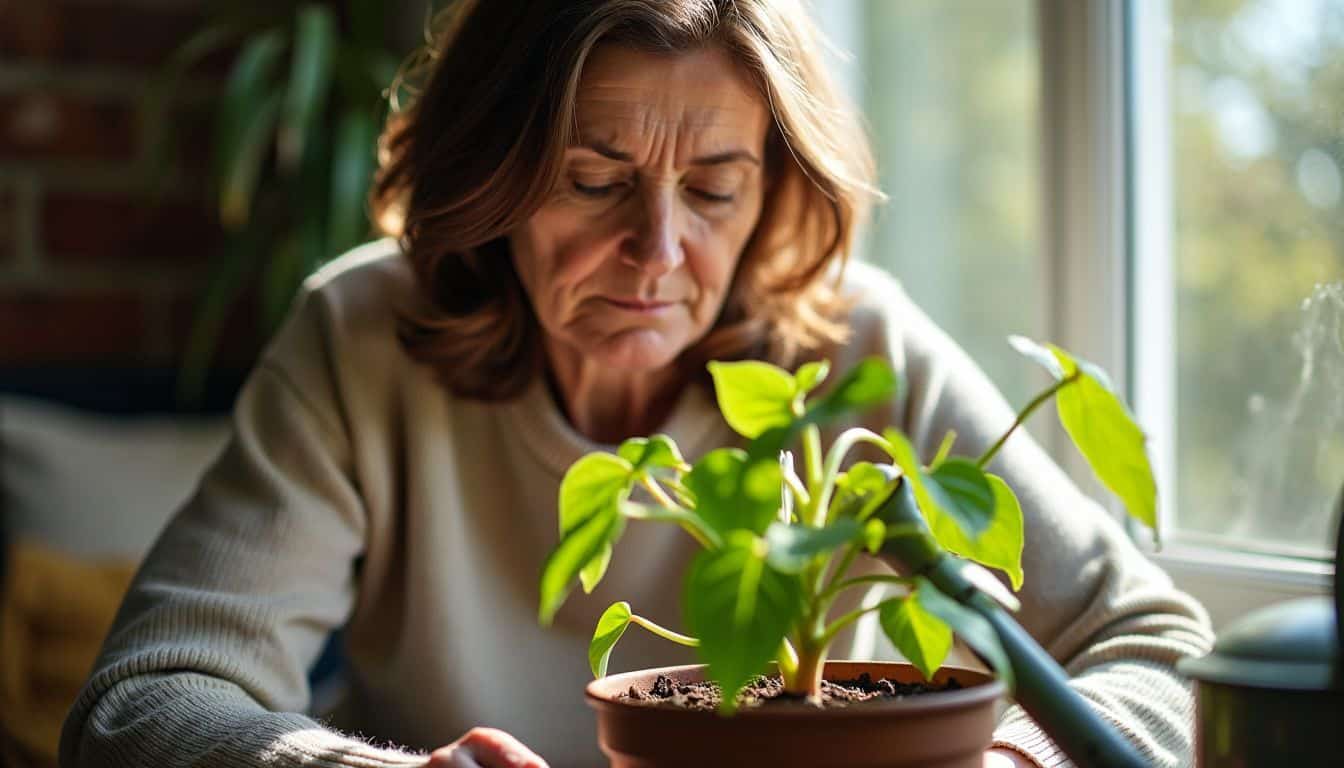
Your plants can’t talk, but they sure can show you when they’re thirsty. Droopy leaves and dry soil are dead giveaways that your garden needs a drink. On the flip side, yellowing leaves and soggy soil might mean you’ve gone overboard with the watering can.
Indicators of Overwatering
Overwatering can wreak havoc on your garden. Yellow leaves are a dead giveaway – especially on young plants. If you spot this, you’re likely giving your green buddies too much H2O.
But that’s not all… Wilting is another red flag. Sounds weird, right? You’d think droopy plants need more water. Nope! When roots get waterlogged, they can’t do their job. The result? Sad, limp leaves.
Here’s a pro tip from my years of gardening: Give your plants a gentle squeeze. Overwatered ones feel soft and mushy. It’s like they’ve turned into plant pudding. Gross, I know. But it’s a surefire way to catch the problem early.
Keep an eye out for mold or algae, too. These little freeloaders love excess moisture. If you see ’em, it’s time to ease up on the watering can.
Signs of Underwatering
Plants tell us when they’re thirsty. Droopy leaves and dry soil scream for water. You’ll spot yellow or brown leaves that feel crispy. Growth slows down, and new shoots look stunted.
Leaves might curl up or fall off entirely. Once damaged, these leaves won’t bounce back.
I learned this the hard way with my basil plants last summer. The soil felt like dust, and the leaves hung limp. It was a wake-up call to step up my watering game. Don’t let your garden suffer – keep an eye out for these signs.
Next, let’s dive into some pro tips for watering your garden like a champ.
Pro Gardening Tips for Efficient Watering
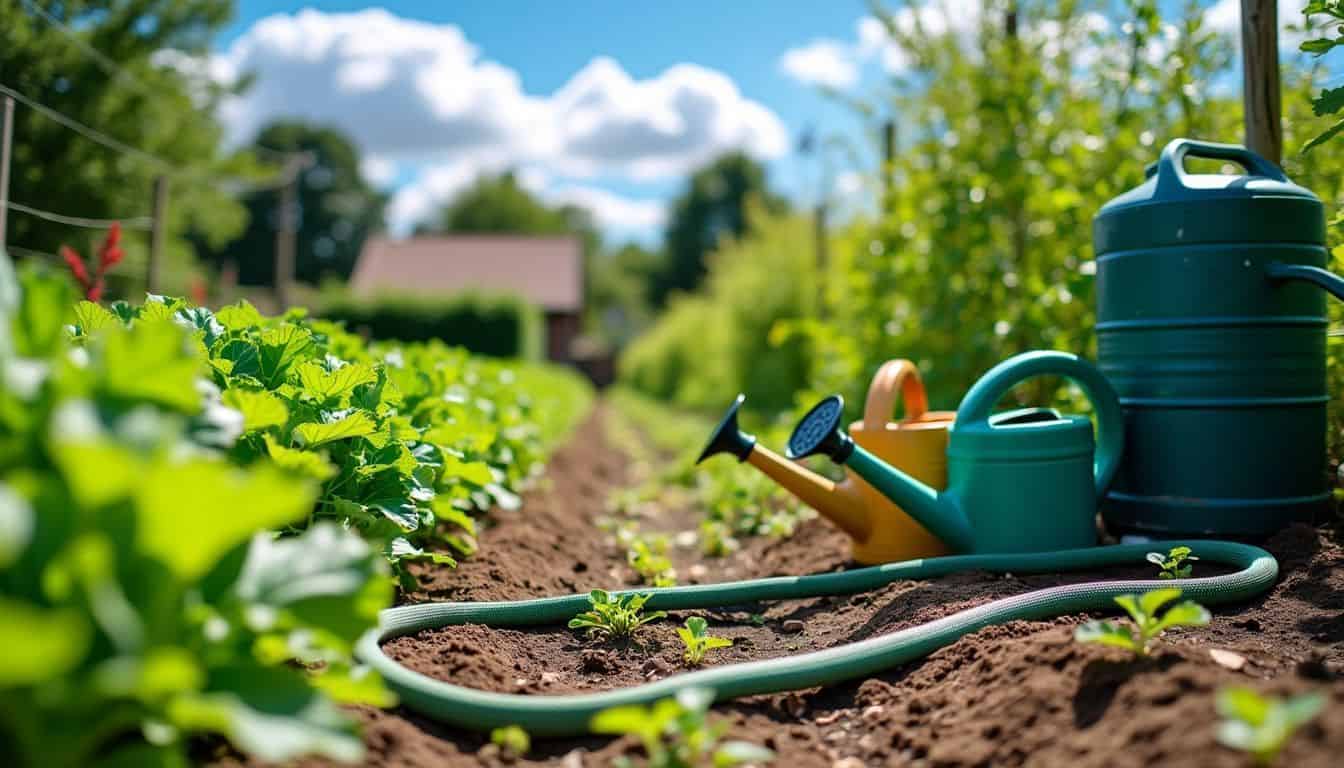
Ready to level up your garden game? These pro tips will make your watering routine a breeze. You’ll learn tricks that’ll save time and keep your plants happy as clams.
Watering Strategies for New and Mature Plants
New and mature plants need different watering approaches. Let’s dive into some smart strategies for keeping your garden hydrated and happy.
- Seedling care: Water newly planted seeds lightly but often. Keep the top layer of soil moist until sprouts appear. This helps with germination and gets your plants off to a strong start.
- Young plant needs: For the first two weeks, water young plants daily. This helps their roots develop and settle into the new soil. Use a gentle spray to avoid damaging delicate stems.
- Mature plant wisdom: Once established, most plants prefer deep, infrequent watering. Aim for about an inch of water per week. This encourages roots to grow deeper, making plants more drought-resistant.
- Morning magic: Water early in the day. This gives plants time to absorb moisture before the heat sets in. It also reduces water loss from evaporation.
- Mulch matters: Apply a layer of mulch around your plants. This helps retain moisture, regulate soil temperature, and suppress weeds. It’s a game-changer for water conservation.
- Weather watch: Adjust your watering schedule based on rainfall. Use a rain gauge to track how much water your garden is getting naturally. This prevents overwatering and saves you time and effort.
- Root zone focus: Water at the base of plants, not from above. This gets water where it’s needed most and helps prevent leaf diseases like downy mildew.
Guys who enjoy gardening know that proper watering is key to plant health. Now, let’s look at some signs that your watering game might need tweaking.
Adjusting Watering Practices with the Seasons
Seasons change, and so should your watering habits. Smart gardeners adapt their watering routines to match nature’s rhythm.
- Spring: As plants wake up, they need more water. Water deeply once a week, giving about an inch of water. This helps roots grow strong.
- Summer: Hot days mean thirsty plants. Up your game to two inches of water per week when temps hit 90°F. Water early in the morning to beat the heat.
- Fall: Cool weather means less watering. Cut back to once a week, but keep an eye on new plantings. They might need extra care.
- Winter: Most plants go dormant. Hold off on watering unless it’s been very dry. Focus on indoor plants and any evergreens.
- Rainy Seasons: Let Mother Nature do the work. Skip watering if you’ve had an inch of rain that week. Your plants will thank you.
- Dry Spells: Even in cooler months, keep an eye out for dry patches. Water if the soil feels dry two inches down.
- Mulch Magic: Add a layer of mulch in spring and fall. It keeps moisture in and makes your watering more effective.
- Container Plants: These dry out faster. In summer, you might need to water daily. In winter, cut back to once a week.
- New Plants vs. Old Timers: Freshly planted greens need more frequent watering. Established plants can handle less.
People Also Ask
When’s the best time to water my garden?
How often should I water my veggie patch?
Can I use sprinklers for my herb garden?
What about watering in arid regions?
How do I water newly transplanted plants?
Should I water my polytunnel differently?
References
https://blog.constellation.com/2021/08/09/when-is-the-best-time-to-water-a-garden/
https://www.homesandgardens.com/gardens/best-time-to-water-a-vegetable-garden (2024-06-22)
https://www.wikihow.com/Choose-the-Best-Time-for-Watering-a-Garden
https://lawnlove.com/blog/how-often-to-water-vegetable-garden/ (2023-10-13)
https://extension.unr.edu/publication.aspx?PubID=3526
https://www.almanac.com/when-water-your-vegetable-garden-watering-chart (2024-06-28)
https://homesteadingfamily.com/best-time-to-water-garden/ (2021-08-21)
https://blog.soil3.com/best-practices-watering-garden (2020-08-18)
https://www.homesandgardens.com/gardens/deep-watering (2024-06-27)
https://greenthumbgardeningsecrets.com/the-power-of-mulch/
https://www.growveg.com/guides/mulching-to-save-time-and-water-in-your-garden/ (2020-07-10)
https://rockledgegardens.com/reading-the-leaves-signs-of-overwatering-and-underwatering-how-to-know-the-difference/ (2024-03-13)
https://www.veggiegardener.com/threads/signs-you-are-overwatering-the-garden.563/ (2012-12-22)
https://www.theplantpenthouse.com/post/how-to-recover-from-the-perils-of-underwatering-your-plants
https://extension.illinois.edu/blogs/flowers-fruits-and-frass/2018-07-30-watering-all-season-long (2018-07-30)
